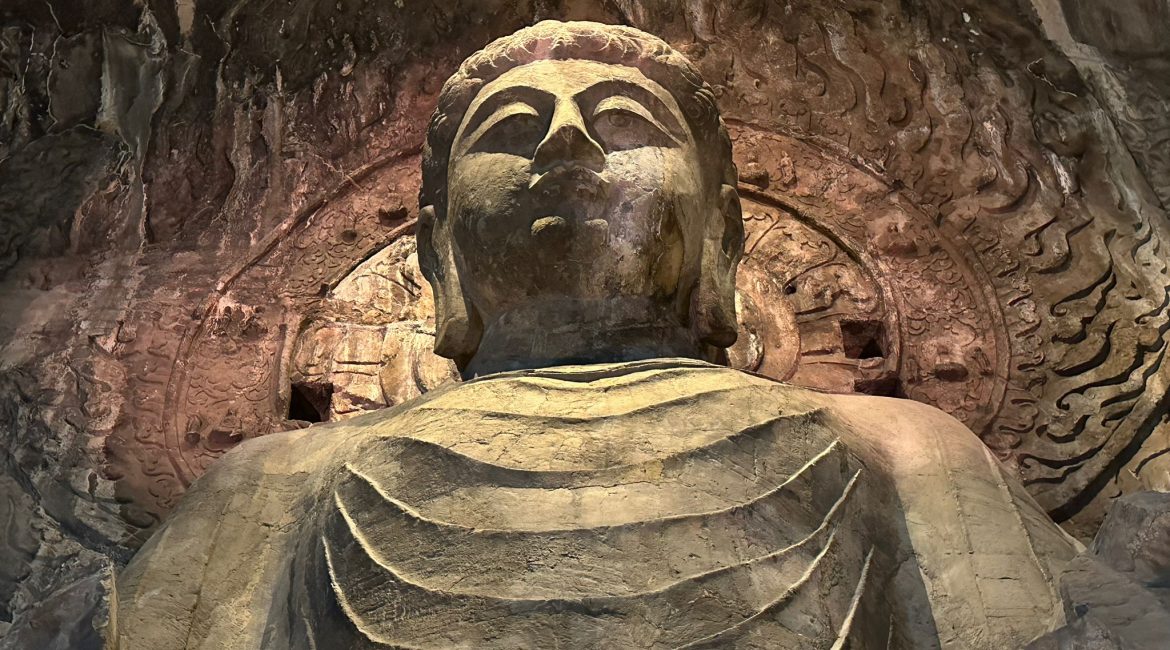Volumes and books have been written about the presence of Vairocana or Mahavairocana in the tantric tradition: he is particularly well-known in the Tibetan and Japanese expressions of esoteric Buddhism, but by travelling from Luoyang to Xi’an, which is the first half of this month’s visit along the Chinese Buddhist Silk Road (the latter half being the Hexi Corridor), one cannot help but notice Vairocana at multiple spots: at the White Horse Temple’s most important wing, Qingliang Terrace (inside the central structure called the Vairocana Pavilion) in Luoyang, within the Mahavira hall of Daxingshan Temple in Xi’an, within the Mahavira hall of Daci’en Temple in Xi’an, and the Mahavira hall of Famen Temple in Fufeng County outside of Xi’an.
Not only has the Great Sun Buddha and the esoteric Five Buddhas been a constant fixture in Chinese Buddhist history, but in today’s China, they have enjoyed outright state support, just as in the old days when Buddhism relied on imperial patronage. Although esoteric Buddhism is no longer a prominent living institution in China (with those interested in receiving proper transmission having to either become Vajrayana practitioners in the Tibetan tradition or receive Shingon training in Japan), Daxingshan Temple has been given a state mandate to promote itself as the heart of esoteric (tangmi; zhenyan) heritage in China. That means a very prominent celebration of Vairocana.
But the most famous and striking Vairocana image is located at Fengxian Temple, which was built by followers of Wu Zhou emperor Wu Zetian (624–705). The cave was carved out of the Longmen Grottoes area between 672 and 676 and feature the finest Buddhist rock-cut art in the already impressive Longmen area.
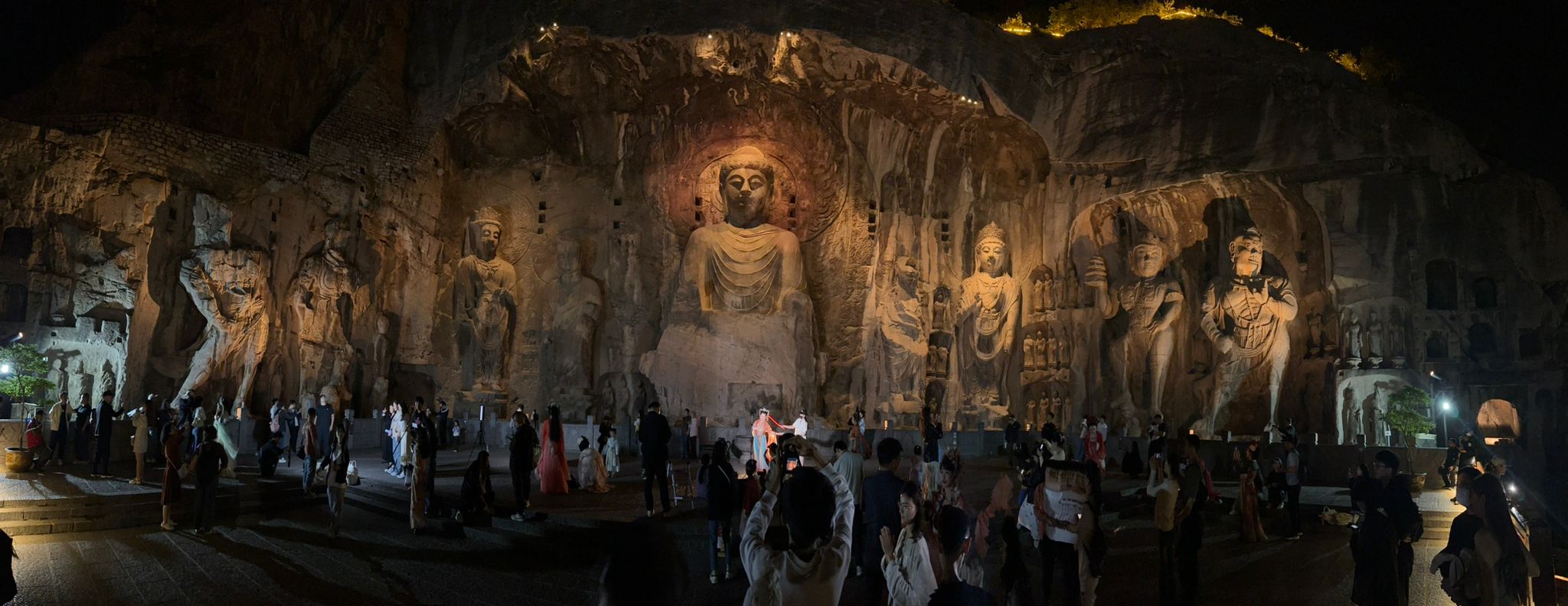
It is impossible to capture the whole temple’s facade without a panoramic shot. The Longmeng Grottoes are open for a couple of hours at night, and it is worth waiting until after sundown to see the sculptures. The shadows and contrasts reveal further depth and detail to the already fine figures of the bodhisattvas, Vairocana, and arhats and guardians.
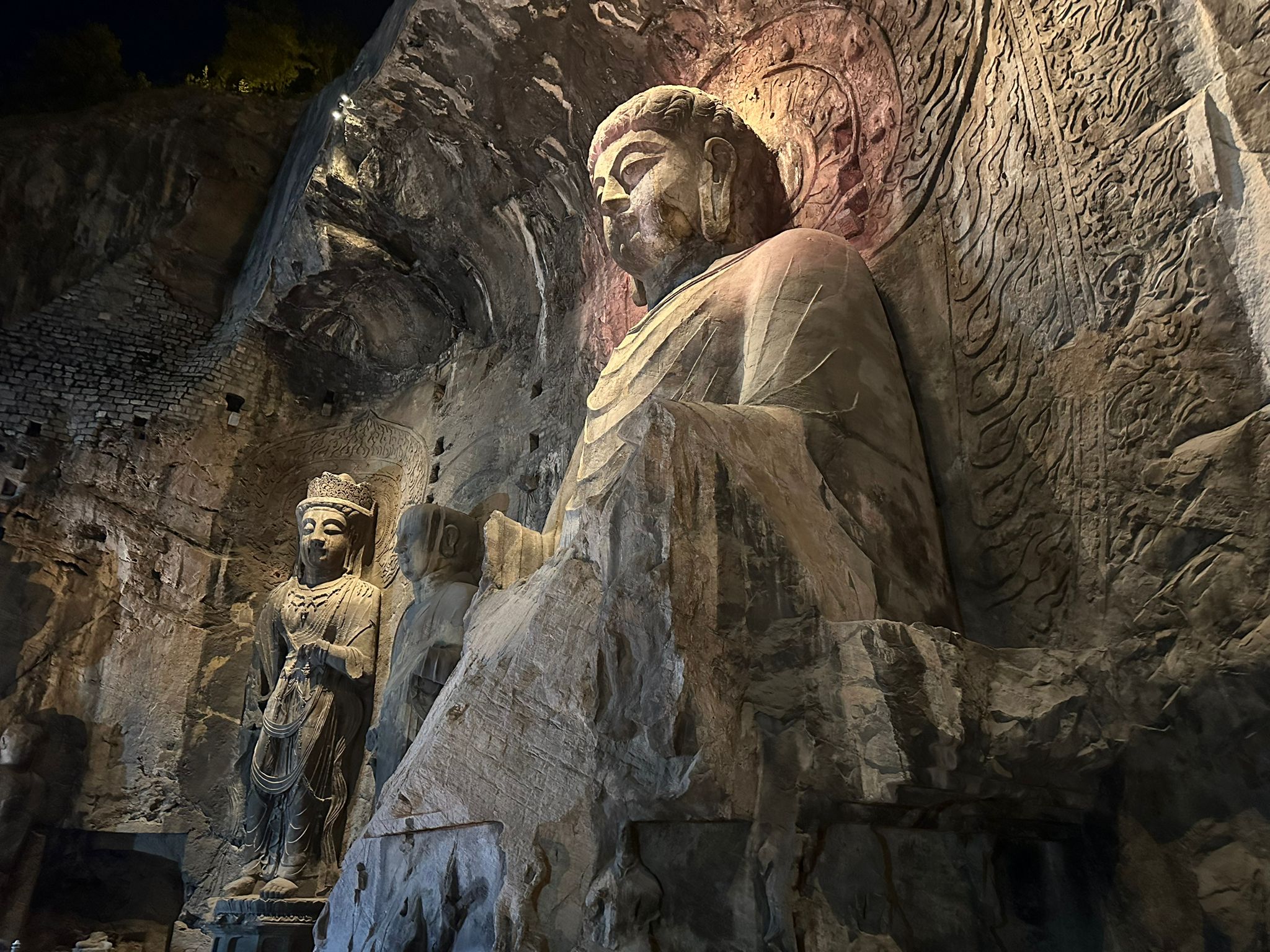
The Fengxian Temple is the largest cave in the Longmen Grottoes, which is not surprising given its imperial provenance. The Vairocana image was not only a statement by Wu Zetian of her divine power and Buddhist affiliation, but also has been considered by some art historians and Tang-era scholars to potentially represent Wu Zetian at 40-something years old. Whether this coded representation of China’s first and only female emperor, who launched a coup against the Tang and ascended the throne in her mid-sixties in 690, really represents her when she was a younger lady, remains a tantalizing mystery. She was no doubt not only extremely formidable, fierce, and cunning, but also very attractive and charismatic.
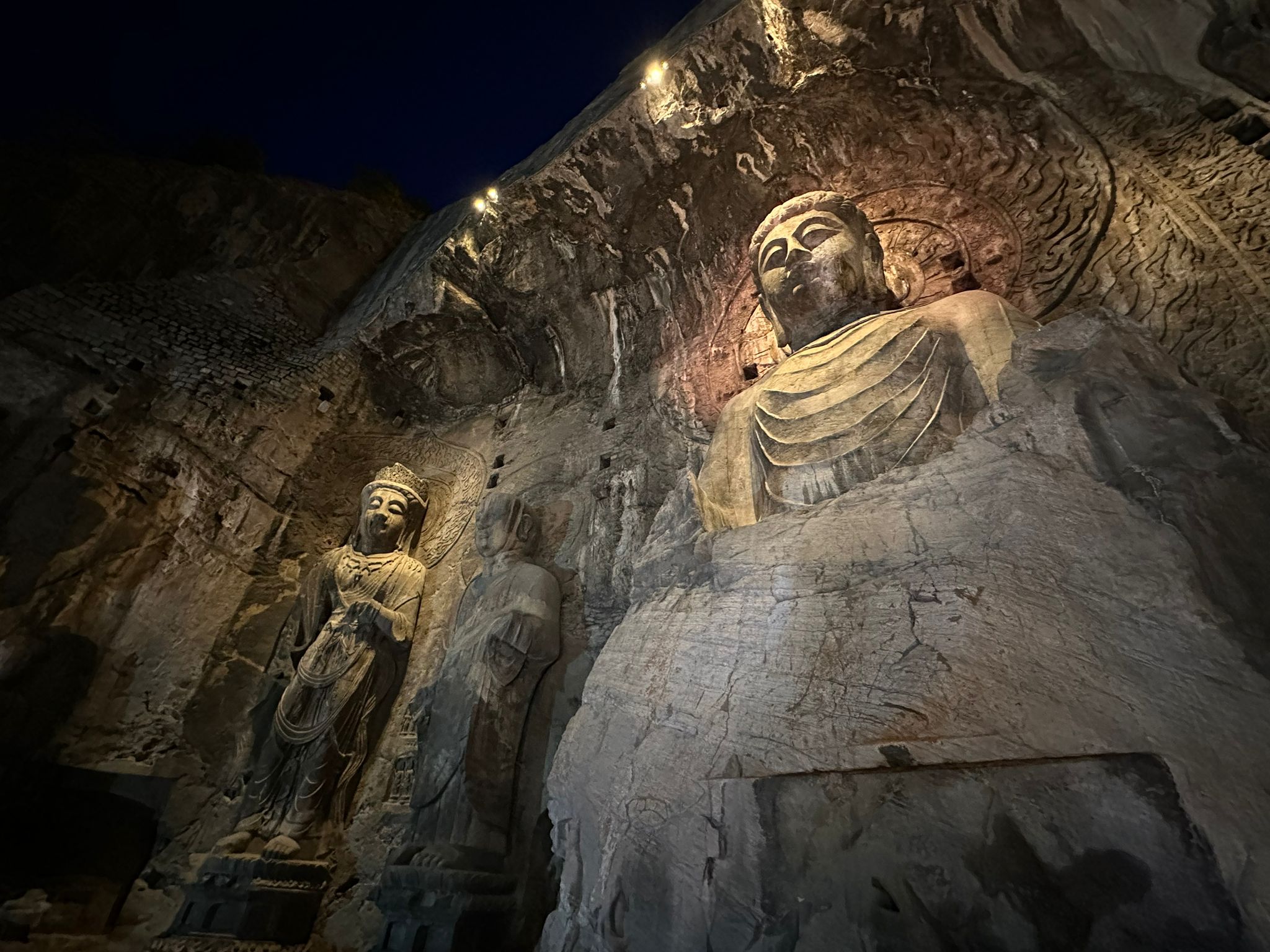
Despite heavy damage over the centuries (not even the Vairocana image has escaped unscathed), the images remain impressive and awe-inspiring thanks to their sheer size, exquisite features, and spiritual presence.
And although after her death she was scrubbed from historical records by Tang officials and court historians (almost certainly all male) who absolutely hated her, Wu Zetian is celebrated in today’s Luoyang and Xi’an in many forms: from an empowered female leader to a crucial historical attraction and even a tourist mascot constantly appearing throughout the cities’ streets, in restaurants, and in souvenir shops. All with apparent state approval and even enthusiasm.
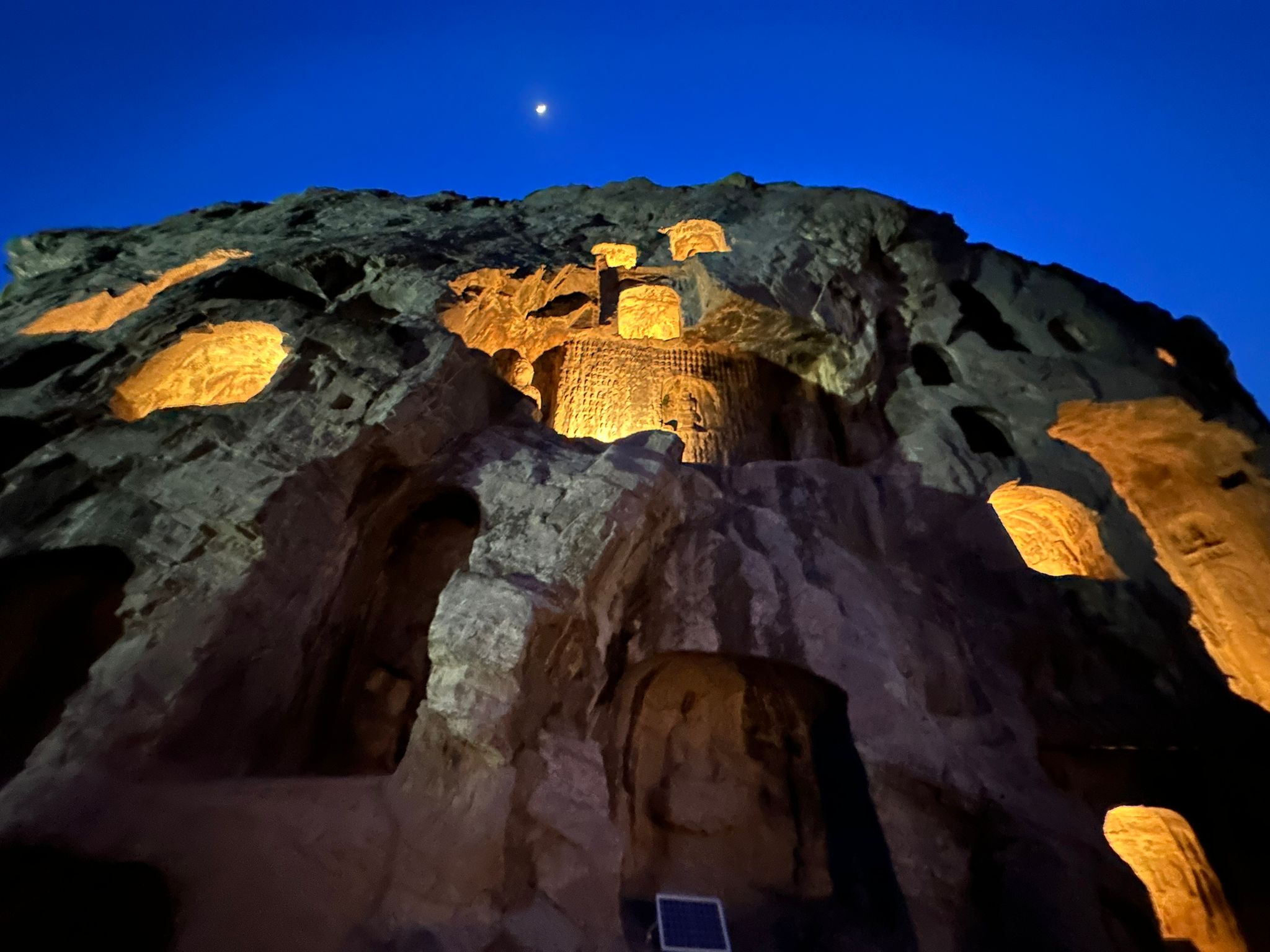
Although the Fengxian Temple is the most famous area of Longmen, there are actually around 1,400 caves and over 100,000 statues in the overall area. The entire site has been an anchor of Buddhist power since Emperor Xiaowen of the Northern Wei dynasty, and is without a doubt one of the critical points of the Chinese Buddhist Silk Road.
Related blog posts from BDG
A Tantric Story: The Visvavajra Presence at Dunhuang and Sino-Tibetan Esotericism
From the Capitals to the Corridor: A Visit to China’s Silk Road


